Are Icelandic horses always broken in late?
It is often thought that we Icelandic trainers break our horses in very late.
Many think it best that the horse be 5 or 6 years old before it is ridden. This conception probably comes from the fact that, for many year, it is true that Icelanders did break their horses in very late. However, after the 1970’s, things evolved rapidly and Icelanders now generally start riding their horses around three years old.
Of course each and everyone has its own methods and points of views but in general, the breaking in procedure and the teaching of the gaits are divided into two phases, distributed along two years or winters.
The goal is to go slow and be fair by taking into account everything we know about each horse (how mature it is physically and mentally, what experience it has of being around people…).
Here is a little overview of the way we at Pur Cheval like to work:
Our foals stay with their mother for the first months. They are only handled to be vaccinated, wormed, have their hooves cute or if something happens to them.
When the foal is about 7 to 10 months old, we wean it. We then keep it in the stable and start handling it. We teach it to accept the halter and to follow the lead, to accept to be brushed and to lift its feet when we ask. This work usually gives us an idea of the foal’s personality. We often also lunge it/make it run in order to assess the quality of its movements.
This procedure only takes about 2 to 3 days with one daily session of about 15 minutes. The foals then go to another field with horses of different ages.
At two year old, young horses are taken into the stable and the same process is repeated. If the horse is calm, it will be introduced to the saddle and bridle. Here, the process is spread over 5 days to a week and each session takes about 15 minutes.
The breaking in phase itself usually starts in the foal after the horse turns three. It is then that the horse will learn to carry a rider on its back and to respond to the aids. We then teach it to go forward, stop and turn to the sides.
This is done first by lungeing the horse with the rider, then ridding it as it is attached to another horse on outside rides and eventually with the horse ridden alone in an arena and then outside.
Theses sessions have to be short and fun. The goal is to keep a positive horse which is learning to go forward in balance at different gaits. Generally, this process takes 2 to 3 months with3 to 4 sessions of 20-25 minutes per week.
When the horse reaches four years old, the real work starts. After going over everything it has learnt in the previous years, more demanding exercises are introduced and it is taught the connection between the rider’s aids and the different gaits. The horse’s stamina is also slowly increased.
Here again, each session is rather short to start with. Session duration is then increased slowly according to the horse’s evolution.
From then on, we can say that the horse is broken in. Of course, it stays very important to have diversity in the training, to ride and to work from the ground, in order to keep a physically and mentally balanced, strong and fit horse.


